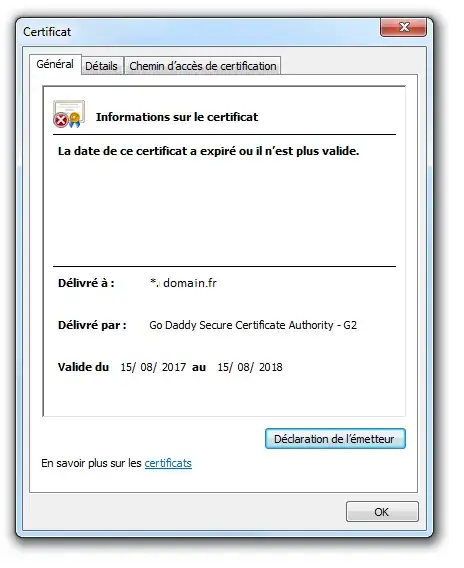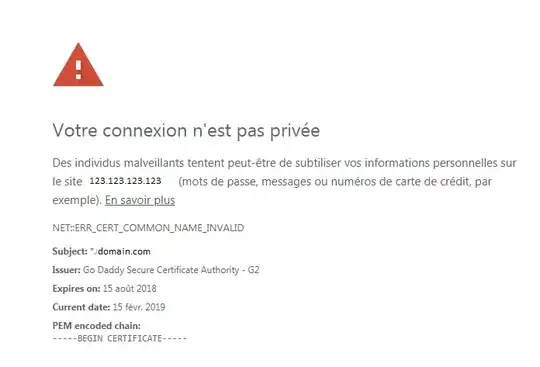I have a public IP (for eg: 123.123.123.123) and I would like to install the ssl on a nginx server (for using https). I have a folder in /etc/nginx/ssl where I store my .crt and .key. Here is my nginx.conf :
user nginx;
worker_processes auto;
error_log /var/log/nginx/error.log;
pid /run/nginx.pid;
# Load dynamic modules. See /usr/share/nginx/README.dynamic.
include /usr/share/nginx/modules/*.conf;
events {
worker_connections 1024;
}
http {
server_tokens off;
log_format main '$remote_addr - $remote_user [$time_local] "$request" '
'$status $body_bytes_sent "$http_referer" '
'"$http_user_agent" "$http_x_forwarded_for"';
access_log /var/log/nginx/access.log main;
sendfile on;
tcp_nopush on;
tcp_nodelay on;
keepalive_timeout 65;
types_hash_max_size 2048;
include /etc/nginx/mime.types;
default_type application/octet-stream;
client_max_body_size 2M;
include /etc/nginx/conf.d/*.conf;
server {
#listen 443 ssl http2 default_server;
#listen [::]:443 ssl http2 default_server;
listen 443 ssl;
server_name _;
root /usr/share/nginx/html;
add_header X-Frame-Options "SAMEORIGIN";
ssl_certificate "/etc/nginx/ssl/site_bundle.crt";
ssl_certificate_key "/etc/nginx/ssl/site.key";
ssl_protocols TLSv1 TLSv1.1 TLSv1.2;
ssl_ciphers 'EECDH+AESGCM:EDH+AESGCM:AES256+EECDH:AES256+EDH';
ssl_prefer_server_ciphers on;
ssl_dhparam /etc/nginx/ssl/dhparam.pem;
location / {
}
error_page 404 /404.html;
location = /40x.html {
}
error_page 500 502 503 504 /50x.html;
location = /50x.html {
}
}
}
I have the following error :
In my SSL folder I have different files but I don't know wich one to use :
- 12ae1782cad698c6.crt
- a61d9dc8af1i5477.crt
- dhparam.pem
- gd_bundle-g2-g1.crt
- domain_bundle.crt
- domain.key
I got this message from my browser about the certificate


